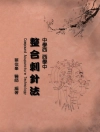Ultrasound-Guided Chemodenervation Procedures provides a comprehensive multimedia approach to neurotoxin therapy using ultrasound. This combined text/atlas offers a complete review of toxin therapy, both current indications and emerging applications, as well as a detailed review of ultrasound technology and ultrasound guidance techniques for botulinum toxin injections and nerve blocks. The work also includes a detailed anatomic and pictorial atlas, which will be invaluable to clinicians performing procedures with or without ultrasound guidance. The text section of the book is a reference manual, covering conditions and indications, chemodenervation agents, and ultrasound basics including essential physics, machine settings, artifacts, scanning techniques, and procedural guidance techniques. The illustrated atlas sections offer a stunning visual roadmap for understanding ultrasound anatomy, localizing muscles, and safely and successfully performing chemodenervation procedures.
Features of Ultrasound-Guided Chemodenervation Procedures include:
- More than 1, 300 clinical pictures, anatomical drawings, and ultrasound stills
- Practical yet comprehensive-an indispensable print and electronic reference for clinicians
- Review of ultrasound technology, techniques, and clinical applications for chemodenervation
- Review of clinical indications and emerging uses of botulinum toxin
Spis treści
I. Neurotoxin Review : 1. Pharmacology; 2. Toxin Handling; 3. Clinical Applications; 4. Dystonia of Upper Limb; 5. Dystonia of Trunk; 6. Cervical Dystonia; 7. Hemifacial Spasm; 8. Dystonia of Lower Limb; 9. Upper Motor Neuron Syndromes; 10. Hyperhidrosis; 11. Sialorrhea; II. Ultrasound Basics : 12. Ultrasound Physics; 13. Instrumentation and Knobology; 14. Scanning Techniques and Tips; 15. Ultrasound Properties of Tissues; 16. Comparing Guidance Techniques; 17. Ultrasound Guidance for Nerve Blocks; III. Atlas : 1. Head, Neck, Trunk; 2. Upper Limbs; 3. Lower Limbs; Hand
Includes DVD with video, still images, illustrations, and animation
O autorze
Mark Hallett, MD, Chief, Medical Neurology Branch, National Institute of Neurology and Stroke, Bethesda, MD












